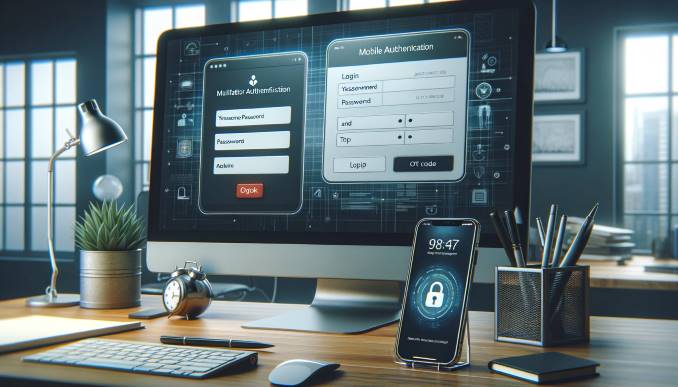Using Multifactor authentication
Multifactor Authentication greatly increases your security. Here is what you should know about MFA.

How to Enhance Your Online Security with MultiFactor Authentication
Risks of Password-Only Authentication
Using only a password for your accounts is highly risky. It makes it easy for hackers to gain access through various methods like brute force attacks, phishing, or even guessing. To mitigate these risks, it’s essential to adopt MFA.
Different Names for MultiFactor Authentication
Its also known as Two-Factor Authentication (2FA) or Two-Step Verification. These terms are often used interchangeably, but they all aim to enhance account security.
How Does MultiFactor Authentication Work?
MFA significantly reduces the risk of unauthorized access by requiring more than one proof of identity. Typically, it involves something you know (like a password) and something you have (like a token or mobile device). Always enable MFA on your accounts when it’s available to boost your security.
How to Enable MultiFactor Authentication
To activate MFA, navigate to the “Security” or “Privacy” settings in your account settings. Most platforms provide on-screen prompts that guide you through the setup process using your preferred authentication method.
Popular Forms of MFA:
SMS (Text Message) or Voice Calls:
- Pros: Widely available and easy to use.
- Cons: Susceptible to interception, making it less secure than other methods.
Application-Based:
- Pros: More secure and convenient, as it doesn’t rely on network-based transmission.
- Cons: Dependent on having the device with you, which can be a limitation if the device is lost or inoperative.
Phishing-Resistant Methods:
- Pros: These include hardware tokens that provide an additional security layer.
- Cons: Physical tokens can be lost, which might lock you out of your account temporarily.
Fingerprint Authentication or Facial Recognition:
- Pros: Offers high security and ease of use, as the authentication is tied to unique personal biometric data.
- Cons: The accuracy of biometric systems can vary depending on the device’s quality and environmental factors.
Where to Enable MFA
Consider enabling MFA for all services that support it, especially those involving sensitive information like email accounts, social media, and banking platforms. Use authenticator apps whenever possible for enhanced security and convenience as compared to only using passwords.
By following these straightforward steps to enable MFA, you can significantly improve your online security and protect yourself from potential cyber threats.